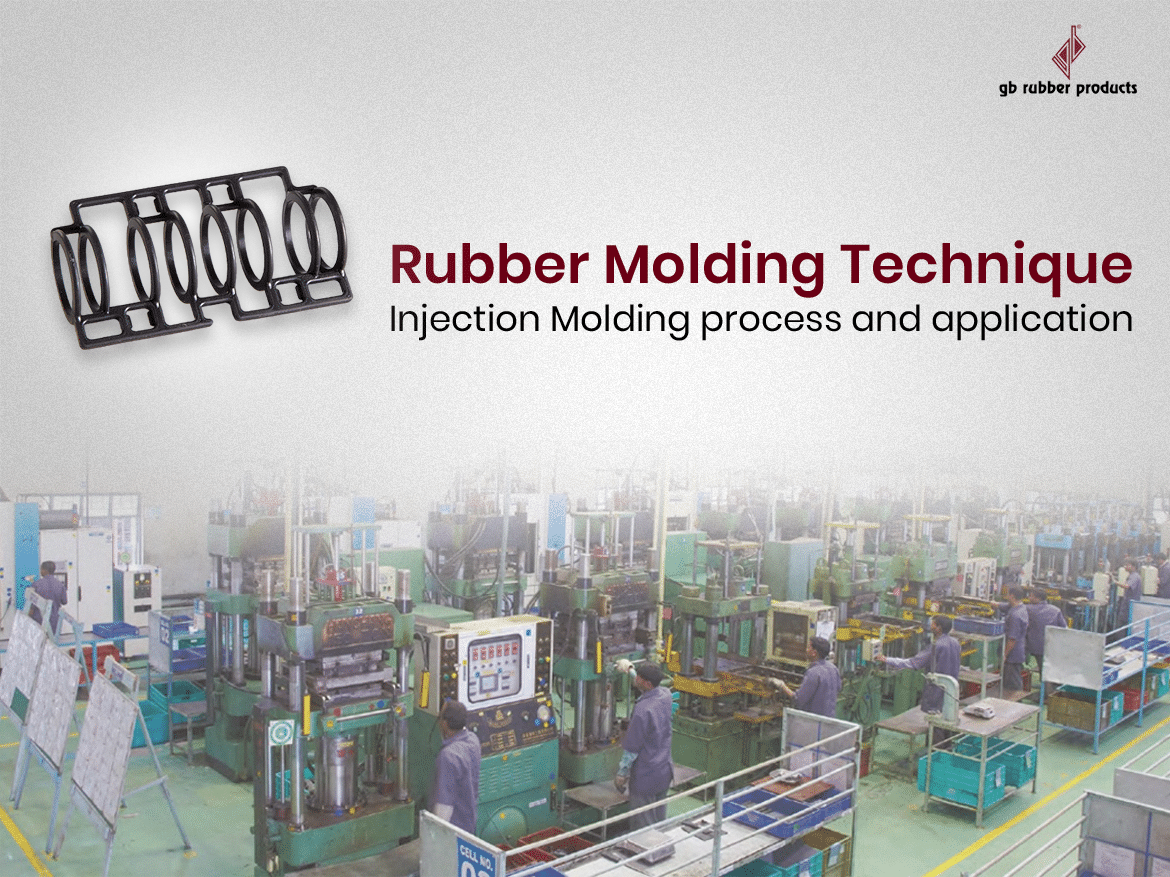Have you ever wondered about the integration of rubber goods into everyday objects that enhance the efficiency of industrial products? Rubber moldinghas emerged as a transformative technique that combines innovation with precision, from rubber components in your cars to seals for medical devices and grips for daily electronic equipment. In this blog, we will shed light on one of the most rare and precise molding techniques – Injection Molding. Continue reading to comprehensively understand injection molding’s process, types, and applications.

What is Rubber Injection Molding?
Injection Molding is a manufacturing technique that involves injecting molten material into a mold cavity. The application of pressure and chemical reactions, such as vulcanization or curing, transforms the uncured rubber into a final usable product. After that, continuous pressure and heat on the mold cavity give the molten material its desired shape.
However, injection molding also involves a combination of rubber and metals, known as rubber-to-metal bonded injection moldeding components . Additionally, this blend provides a final product with the flexibility of rubbers and the strength of metals.
Process of Injection Rubber Molding
The injection molding process produces goods that require tight tolerance with high accuracy and precision. Below is an overview of the injection molding process that creates final industrial products; know the process from the first to the final step.
- Material Preparation: For injection molding, raw materials typically include rubber compounds.>
- Injection: After finalizing the raw materials suitable for this process, the molten material is injected into a mold cavity through a runner and gate.
- Vulcanization: The material is cured and vulcanized to take a desired shape under high heat and pressure.
- Ejection: The ejection process is done to reveal the final rubber or rubber metal bonded components.
- Finishing: It is one of the crucial processes to ensure that the product successfully achieves the final specifications, serving as the concluding step in the molding process.
Types of Injection Molding
Injection molding has its association with various materials, including plastics, rubber, metals, etc. Some of the known injection molding processes that cater to specific needs are:
- Plastic Injection Molding: This is one of the standard methods where molten plastics from various plastic materials are injected into a mold. Additionally, thermoplastic injection molding is also one part of the molding process that combines the flexibility of rubber with thermoplastics. This process is ideal for automotive components, household goods, and industrial equipment.
- Rubber Injection Molding: As the technique reveals, this process is similar to plastic but specifically designed for rubber materials, creating the finest rubber components.
- Liquid Silicone Rubber Molding (LSR): In this process, silicone remains the ideal material due to its flexibility and heat-resistant properties. This process generates components that are commonly present in the medical and automotive sectors.
In the manufacturing industry, collaboration with rubber compounding companiesis essential to produce custom rubber products that meet the demands and requirements of various sectors. Furthermore, this expertise ensures that the rubber materials used in the injection molding process stand unique by exhibiting optimal characteristics. Let’s look at how these companies provide their applications across various industries.
Applications of Injection Molding
- Automotive Components: Injection molding has its application in the automotive sector. Components such as durable seals and gaskets ensure airtight joints and prevent leaks in critical components.
- Medical Devices: Healthcare goods demand precision in their products, making rubber molding indispensable for manufacturing components like o-rings, tubing, and seals used in medical devices.
- Consumer Electronics: Many everyday electronic goods are manufactured using injection molding and components such as protective casings, buttons, and connectors.
- Construction Materials: Products like vibration mounts and seals play a crucial role in the construction industry, providing durability and longevity of the components in extreme weather conditions.
- Aerospace Sealings: In the aerospace sector, components like o-rings, gaskets, and seals are integrated to ensure the overall safety of the airplane.
- Industrial Applications: The continuous functioning of the machinery leads to wear and tear. Therefore, applications like vibration isolators, couplings, and gaskets contribute to the smooth functioning of the machinery.
- Custom Components: The injection molding process is applied in various industrial settings, producing custom components such as bushings, grommets, and seals.
As industries demand more precision and high-tensile rubber-molded components, GB Rubber Product is the leader in producing various custom rubber products with premium quality and performance.
Read More – The Ultimate Guide On Bonding Rubber to Metal: GB Rubber Products
Choose GB Rubber Products – Leading Supplier of Custom Rubber Products
GB Rubber Products stands out as India’s top choice when it comes to the search for reliable rubber components manufacturing.
While we offer a wide range of rubber components, we also specialize in providing custom solutions to our clients. Our commitment to continuous innovation sets us apart from other rubber injection molding suppliers in the world. With a solid reputation for reliability, GB Rubber Products continues to shape industries by delivering top-notch solutions.
Contact our experts today for more information.



